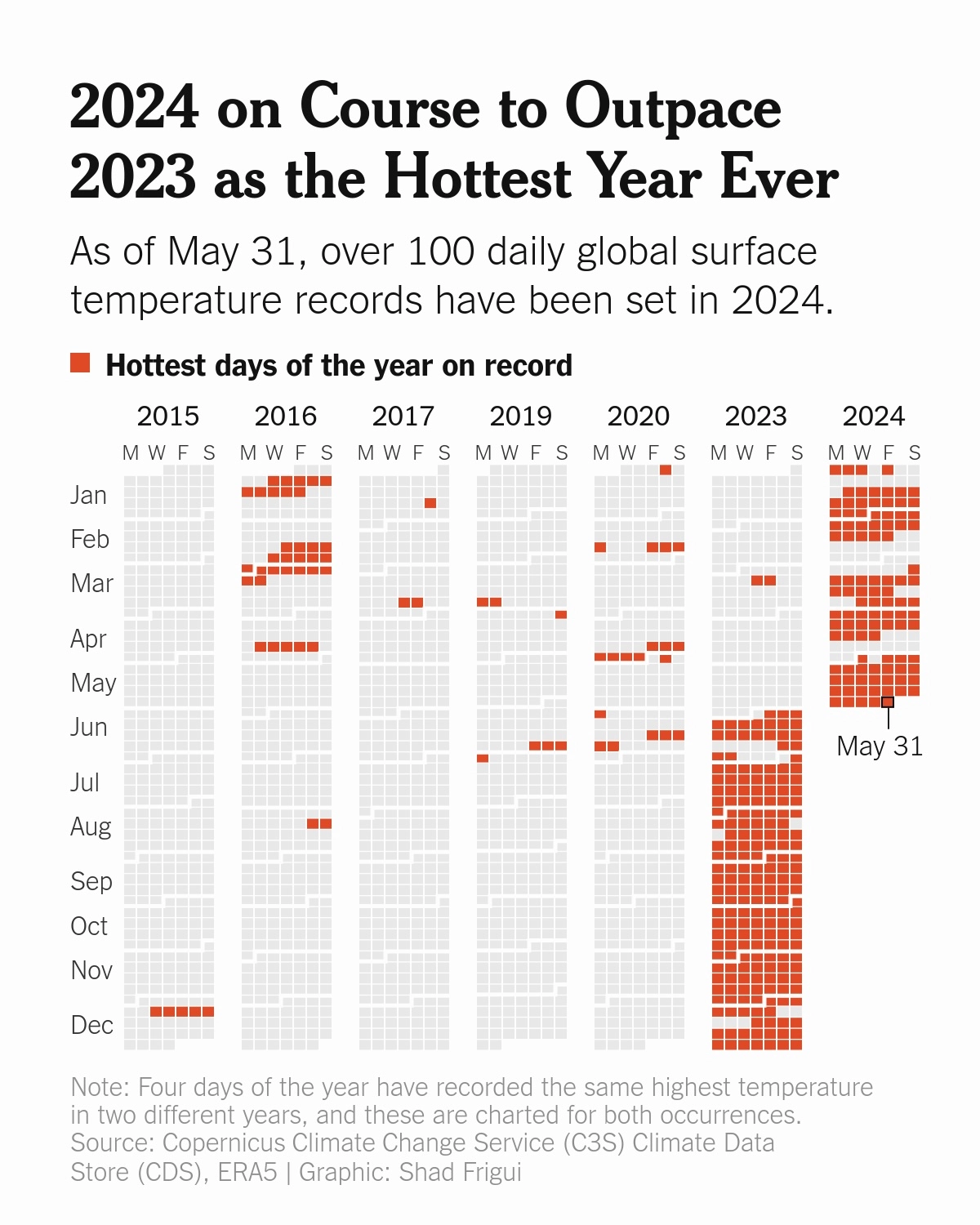TL;DR:
- The White House released the National Heat Strategy to address extreme heat challenges.
- The strategy emphasizes a whole-of-government approach and focuses on equity and vulnerable populations.
- Businesses in various sectors will need to adapt to new regulations and invest in heat-resilient infrastructure.
- Tomorrow.io offers weather intelligence solutions to help businesses navigate the impacts of the National Heat Strategy.
- Local and state governments will play a crucial role in implementing heat resilience measures.
On Wednesday August 14, the White House released its National Heat Strategy, a critical initiative addressing one of our era’s most pressing challenges.
This announcement follows weeks of record-breaking global temperatures, with 2024 projected to be the planet’s hottest ever.
The National Heat Strategy is an initiative that aims to address the growing threat of extreme heat across the United States.
This comprehensive plan has far-reaching implications for businesses across various sectors, from aviation to outdoor events.
Understanding and adapting to this strategy is crucial for business continuity and growth as climate change continues to drive temperatures to record highs.
Key Takeaways from the National Heat Strategy
To Combat Heat, We Need a Whole-of-Government Approach
The National Heat Strategy represents a significant shift in how the federal government approaches heat-related challenges.
“We recognize that our vision for a thriving, heat-resilient nation is all-encompassing and includes safety, health, and economic well-being across disciplines and timescales.”
It emphasizes a whole-of-government approach, bringing together multiple agencies to create a unified front against the impacts of extreme heat.
“Working within their authorities and through their diverse programs, Federal agencies play unique roles in supporting State, local, Tribal, and Territorial governments and other entities in preparing for an managing the effects of extreme heat.”
Vulnerable Populations Are At Risk
One of the strategy’s most notable aspects is its focus on equity and vulnerable populations.
As the document states, “Extreme heat does not affect all people equally. We must pay special attention to populations that are especially at risk from heat-related illness.”
This inclusive approach means businesses will need to consider how their operations affect and can support diverse communities.
According to the strategy, “Heat-related deaths and illnesses, after staying steady or declining for decades, have risen dramatically in the past four years, indicating a failure of adaption and an urgent need to act.”
It’s not just one group that requires support when it comes to high-impact weather events, everyone must play a role to protect communities and employees.
Long-Term Planning Is Key
The strategy also places a strong emphasis on science-based solutions and long-term planning.
It recognizes that “Heat falls across missions and mandates of the many federal agencies who have come together to chart a path forward for themselves and the country.” This collaborative approach signals a new era of heat management that businesses must be prepared to navigate.
The overall message of the National Heat Strategy is clear: it’s getting too warm for vulnerable communities to thrive. The time to act is now.
Industry-Specific Impacts of the National Heat Strategy
Aviation: Navigating New Altitudes of Heat Resilience
The aviation industry faces unique challenges in the face of rising temperatures. The National Heat Strategy may lead to new regulations on aircraft operations during extreme heat events, potentially affecting flight schedules and routes.
Airlines and airports may need to invegst in heat-resistant infrastructure and develop new protocols for passenger and crew safety during heatwaves.
Construction: Building a Heat-Resilient Future
Outdoor workers will likely feel the impact of heat.
For the construction industry, the strategy could mean significant changes in worker safety regulations, building codes, and material choices.
Construction companies may need to adjust their work schedules to avoid the hottest parts of the day and invest in cooling technologies for workers.
The demand for heat-resistant building materials and energy-efficient designs is likely to increase.
Rail: Staying on Track in a Hotter Climate
Rail networks are particularly vulnerable to extreme heat, which can cause tracks to buckle and signals to malfunction.
The National Heat Strategy may drive investments in heat-resistant rail infrastructure and require new operational procedures during heatwaves.
Rail companies might need to implement more frequent track inspections and develop contingency plans for heat-related disruptions.
Transportation and Logistics: Keeping Cool Under Pressure
The strategy’s implications for the transportation and logistics sector are significant. Companies may need to reassess their routes and schedules to account for extreme heat events.
There could be increased demand for refrigerated transport to maintain cold chains in higher temperatures. Fleet managers might need to invest in heat-resistant vehicles and train drivers on heat safety protocols.
Outdoor Events and Sports: A New Playing Field
Organizers of outdoor events and sports will need to pay close attention to the National Heat Strategy. It may lead to new guidelines on when and how events can be held during hot weather.
Venues might need to invest in cooling infrastructure, and event schedules could shift to cooler seasons or times of day. Athletes and spectators alike will require enhanced heat safety measures.
Local and State Governments: Leading the Charge on Heat Resilience
Local and state governments will play a crucial role in implementing the National Heat Strategy. They may be required to develop comprehensive heat action plans, revise urban planning strategies to mitigate urban heat islands, and enhance emergency response capabilities for heat events.
This could create new opportunities for businesses that can provide heat-resilient solutions and consulting services.
Keeping Safe from Heat with Tomorrow.io
As businesses navigate the new landscape created by the National Heat Strategy, having access to accurate, actionable weather intelligence becomes more critical than ever.
This is where Tomorrow.io comes in, offering cutting-edge solutions to help organizations understand and mitigate the impact of heat on their operations.
Tomorrow.io’s advanced weather intelligence platform provides hyperlocal, minute-by-minute forecasts and insights. This level of precision is crucial for businesses looking to implement the kind of proactive heat management strategies outlined in the National Heat Strategy.
For aviation, Tomorrow.io can provide detailed heat forecasts that help airlines optimize flight plans and ground operations. Construction companies can use Tomorrow.io’s platform to plan work schedules around heat waves, ensuring worker safety and productivity. Rail operators can leverage Tomorrow.io’s predictive capabilities to anticipate potential heat-related track issues and plan maintenance accordingly.
In the transportation and logistics sector, Tomorrow.io’s route optimization features can help companies navigate around extreme heat events, protecting both personnel and cargo. Event organizers can use Tomorrow.io’s long-range forecasts to plan outdoor events with heat safety in mind, while local governments can integrate Tomorrow.io’s data into their heat action plans and emergency response systems.


















